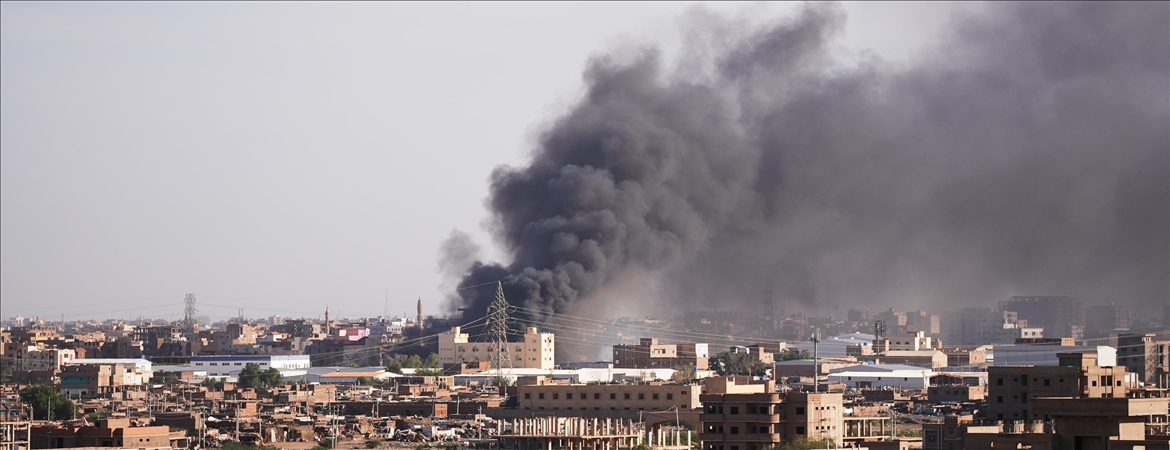We find Sudan entrenched in one of the most devastating conflicts of the 21st century. What began in April 2023 as a power struggle between the Sudanese Armed Forces (SAF) and the Rapid Support Forces (RSF) has, by mid-2025, spiraled into a full-blown civil war that has claimed over 150,000 lives, internally displaced 8.8 million citizens, and forced 3.5 million refugees across international borders.
The recapture of Khartoum by SAF in March 2025 and the RSF’s firm control over Darfur have intensified violence, while famine conditions and disease outbreaks threaten the survival of millions. With 25 million people in dire need of humanitarian aid, Sudan today stands at a crossroads between total collapse and fragile hope.
Origins and Evolution of the Conflict
The roots of the conflict trace back to a botched integration of paramilitary forces into the national army after the 2019 ousting of long-time ruler Omar al-Bashir. Tensions flared on 15 April 2023, when the RSF, led by General Mohamed Hamdan “Hemedti” Dagalo, staged an assault on key military installations in Khartoum and its twin cities. What started as a dispute over command posts morphed into an existential battle for Sudan’s future, pitting SAF head General Abdel Fattah al-Burhan against his former ally Hemedti.
- Failed Integration: Attempts to merge the RSF into the SAF collapsed as both sides jockeyed for power, leading to mutual distrust and sporadic clashes.
- Escalation: By late 2023, fighting had engulfed Khartoum, Omdurman, and Bahri, displacing hundreds of thousands and crippling essential services.
This breakdown of order exposed Sudan’s fragile institutions and ignited long-standing ethnic and regional grievances, particularly in Darfur, where decades-old tensions have resurfaced with brutal force.
Military Dynamics: Shifting Frontlines and Drone Warfare
Recapture of Khartoum
On 21 March 2025, SAF forces announced they had fully retaken the presidential palace and surrounding neighborhoods after weeks of intense urban combat. Brigadier General Nabil Abdullah declared Greater Khartoum free of RSF fighters, marking a symbolic victory for the army. Civilians cautiously celebrated in the streets, hoping for stability after two years of siege and intermittent ceasefires.
RSF Control in Darfur
Meanwhile, the RSF solidified its grip on North Darfur by seizing the Zamzam and Abu Shouk IDP camps in April 2025. The four-day assault left hundreds dead, destroyed shelters, and shattered fragile medical facilities. The RSF’s dominance over these camps, which house nearly 700,000 displaced persons, has turned Darfur into a humanitarian no-man’s-land.
Drone Warfare: A New Escalation
A dramatic shift in tactics emerged in early 2025, as both sides ramped up the use of unmanned aerial vehicles (UAVs). The SAF initially leveraged Turkish and Iranian drones to strike RSF positions, but the RSF soon secured advanced UAVs, reportedly from China and the UAE. These drones have targeted power stations, water facilities, and civilian infrastructure, plunging Khartoum into blackout and compounding the humanitarian crisis by hampering water distribution and healthcare delivery.
Humanitarian Crisis: Death, Displacement, and Disease
Casualties and Displacement
- Fatalities: Over 150,000 killed in crossfire, airstrikes, and mass atrocities.
- Internally Displaced Persons (IDPs): 8.8 million forced from homes, many living in overcrowded camps without adequate sanitation or shelter.
- Refugees: 3.5 million have fled to Chad, South Sudan, Ethiopia, and beyond, straining host communities and aid networks.
Famine and Food Insecurity
Northern Darfur teeters on the brink of famine, with localized crop failures due to ongoing fighting and market disruptions. Humanitarian organizations warn of a “hunger catastrophe,” as food prices soar and relief convoys face ambushes. Aid agencies estimate 25 million Sudanese in need of immediate assistance to avert widespread starvation.
Disease Outbreaks
The destruction of healthcare infrastructure and water systems has triggered cholera, malaria, and measles outbreaks. Power blackouts caused by drone strikes have incapacitated hospitals, rendering them unable to perform basic functions. Mortality rates from preventable diseases are climbing, with children and pregnant women bearing the brunt of the crisis.
International and Regional Involvement
Foreign Military Support
Both sides have courted external backers:
- RSF: Accused of receiving arms, drones, and guided munitions from the UAE and China, enabling aerial strikes deep into government-held areas.
- SAF: Benefitting from early drone deliveries via Turkey and Iran, which bolstered its initial air superiority.
These interventions have internationalized the conflict and undermined regional security frameworks, leading Sudan’s government to sever ties with the UAE in protest.
Diplomatic Efforts and Failures
The United Nations and African Union have repeatedly brokered ceasefires and peace talks, but none have held. Key mediation efforts in Khartoum and Jeddah collapsed as each side accused the other of violations. The absence of a neutral enforcement mechanism means that even agreed pauses in fighting are routinely broken, perpetuating civilian suffering.
Regional Spillover and Geopolitical Risks
Sudan’s collapse threatens wider instability:
- Neighboring States: Chad and South Sudan grapple with refugee influxes and cross-border attacks by armed militias.
- Red Sea Security: Infrastructure damage along the Red Sea route imperils vital shipping lanes, drawing concern from the US, EU, and Gulf states.
- Terrorism: Extremist groups like the Islamic State–West Africa Province (ISWAP) exploit the chaos to expand footholds in western Sudan.
Without a political resolution, Sudan risks becoming a failed state, with repercussions for the entire Horn of Africa and the Sahel.
Paths to Peace: Grassroots and Diplomatic Solutions
Inclusive Dialogue
We advocate for a comprehensive peace process that brings in:
- All Factions: Beyond SAF and RSF, include civilian groups, tribal leaders, and women’s representatives.
- Neutral Mediators: Leverage respected African states and UN envoys to supervise ceasefires.
- Security Guarantees: Establish a third-party peacekeeping force under AU mandate to monitor compliance.
Humanitarian Corridors
The creation of protected corridors—agreed routes for aid delivery—could alleviate suffering. These corridors must be guaranteed by both parties and monitored by impartial observers to ensure safe passage of food, medicine, and shelter supplies.
International Accountability
Documenting and prosecuting war crimes via international bodies will deter future atrocities. A hybrid tribunal combining Sudanese and international judges could investigate mass killings, sexual violence, and ethnic cleansing, signaling that impunity will not endure.
Sudan’s civil war has reached a perilous tipping point in 2025. The recapture of Khartoum by SAF and the RSF’s hold on Darfur underscore a fragmented nation, while famine and disease cast a grim shadow over millions of lives. International mediation has thus far failed to secure peace, and foreign arms flows have exacerbated the conflict. Yet hope remains: through inclusive dialogue, humanitarian corridors, and accountability mechanisms, Sudan may still find a path back from the brink. The world must act decisively to prevent a complete collapse and to honor the resilience of Sudan’s people, who continue to yearn for peace and dignity amid unrelenting warfare.

